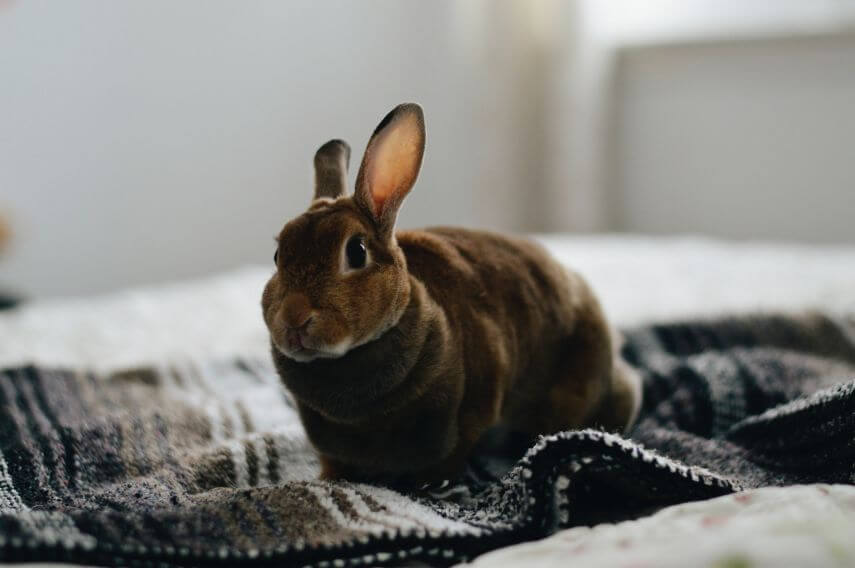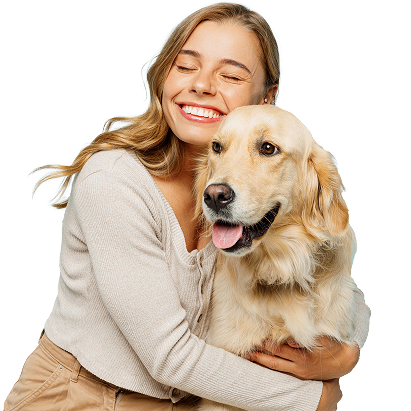Understanding Rabbit Mobility Issues – Osteoarthritis
It is estimated that there are between 1 – 1.5 million pet rabbits in the UK, making them the third most popular pet after dogs and cats. In the wild, rabbits generally, only live to 1-2 years of age but the lifespan of the average pet rabbit is 6-10 years of age, with some even living into their teens! […]
It is estimated that there are between 1 – 1.5 million pet rabbits in the UK, making them the third most popular pet after dogs and cats. In the wild, rabbits generally, only live to 1-2 years of age but the lifespan of the average pet rabbit is 6-10 years of age, with some even living into their teens! Just like their human owners (and dogs and cats) rabbits can develop mobility problems as they age with one of the most common being osteoarthritis (commonly referred to as OA). It is important to note, however, that whilst OA is more frequently seen in older rabbits it can also occur in younger rabbits.
OA is a painful and progressive disease that causes inflammation, stiffness, and pain in the joints and can have a significant impact on mobility. Unlike dogs and cats, due to the fact they are prey animals, rabbits will often hide pain until it becomes overwhelming; as a result of this arthritis in rabbits is frequently missed.
Rabbits may be more prone to developing OA if:
- They have had a previous injury affecting one or more joints
- They are overweight
- They are considered a ‘giant breed’ (e.g. Flemish Giant, Giant French-Lop)
- They are genetically predisposed to joint problems
One of the first signs that your rabbit may be suffering from OA can simply be that they appear to be ‘slowing down’; they may sleep more, or perhaps they’re just not as active as they once were. Other signs that your rabbit may be suffering from OA may include some (or all) of the following:
- You may notice your rabbit keeps getting a dirty back end (faeces/caecotrophs stuck to fur) especially underneath or around the tail region. Due to stiffness and discomfort, OA may prevent your rabbit from cleaning themselves adequately and may make it too difficult for them to eat caecotrophs directly from their bottom; choosing instead to turn around and eat them from the ground.
- You may notice urine soaked fur around the rear end, underneath the tail and between the hind legs. This can occur if OA prevents your rabbit from getting into the correct position to urinate and can cause pain and inflammation in areas of skin that are exposed to the urine (known as urine scalding). In addition, if your rabbit is unable to correctly position themselves for urination, they may also have difficulty fully emptying their bladder; this can lead to urinary tract/bladder issues.
- Your rabbit may begin to develop knots/tangles in areas of fur where they cannot comfortably reach to groom themselves – this may be more pronounced in breeds with long fur.
- Your rabbit may appear to limp, show signs of stiffness or ’wobbliness’; this is often worse after they have been lying down.
- Your rabbit may appear to have difficulty jumping on or off raised areas that they previously had no issue with.
- Litter-trained rabbits may have difficulty getting into or out of their litter trays.
- Your rabbit may generally seem to be less active/move around less, especially when the weather is cold and/or damp.
- Your rabbit may develop a reduced appetite.

If your rabbit shows any of the above symptoms it is important to get them checked out by your vet as soon as possible. It is also important to remember that some of the signs mentioned are not specific to OA and can also occur in other disorders that may affect your rabbit. Once your vet has confirmed that your rabbit is suffering from OA they may prescribe pain relieving medication. There are also lots of simple changes you can implement at home to help make life more comfortable for your rabbit:
- If the floor surfaces your rabbit uses regularly are slippery then you can place some non-slip covering to help them move about more easily
- Obesity can exacerbate the symptoms of OA. If your rabbit is overweight it is important they are put onto a controlled, nutritionally balanced weight loss programme. Your vet will be able to provide you with guidance on how to implement dietary changes safely.
- If your rabbit is having difficulty jumping up/down into their hutch or other elevated areas then you can place non-slip ramps to provide easier access
- Monitor your rabbit’s fur for signs of dirt/soiling, especially around the back end and assist with gentle grooming/cleaning as needed. It is essential to ensure your rabbit has a clean rear end to prevent Flystrike (a potentially fatal condition in which fly larvae/maggots cause severe injury to your rabbit).
- If you notice your rabbit is having difficulty grooming then you can assist them using a soft brush or ‘grooming mitt’. Use soft, gentle strokes and always follow the direction of your rabbit’s fur. Rabbits have VERY thin and stretchy skin, so if you notice any particularly stubborn tangles it may be better visiting your vet to have them removed instead of trying to cut them away yourself.
- Regularly check your rabbit’s nails are not growing too long as this can also impede mobility and cause discomfort. If you are not comfortable clipping your rabbit’s nails then contact your vet who will be able to do this for you or teach you how.
- Ensure your rabbit has a dry and warm living space, especially when the weather is cold and damp. If your rabbit lives outside you may want to consider moving them indoors overnight during the winter (e.g. into a shed, garage or conservatory), but if this is not possible then ensure they are somewhere that is wind-proof and rain proof. You can also provide extra bedding for warmth, just be sure to check it daily to ensure it is clean and dry.
- If your rabbit is litter trained then use a litter tray that is low at the front to make it easier for your rabbit to hop in and out.
- As with all pet rabbits it is essential that your rabbit with OA has plenty of space to exercise; regular, gentle exercise will help reduce stiffness and keep muscles toned. Ensure exercise areas are nice and clear with no tricky obstacles that may cause difficulty for your rabbit.
We hope that our rabbit mobility tips can help you and your bunnies to enjoy a happy, healthy winter season.
 Pet Owner
Pet Owner 



